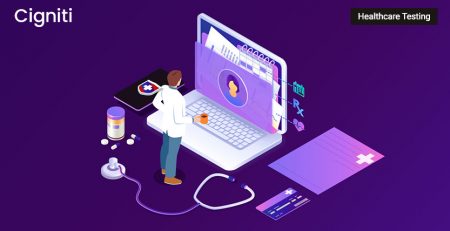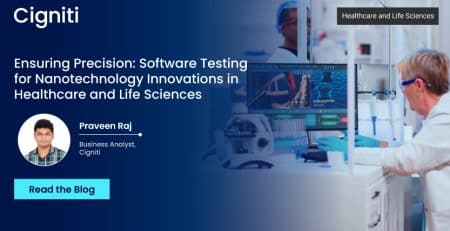Quality Data Management for Diabetes care
A succession of modifications and advances are strongly connected with the continual progress of medicine, particularly in the field of diabetology.
The majority of our daily activities have gone digital in the previous decade. The ever-increasing synergy between advanced medical technologies, innovation, and digital communication is reflected in digital health.
The term “digital health” is a “container” for informatics and telecommunications with the common goals of disease diagnosis, treatment, or monitoring, health and well-being maintenance, and support for healthy lifestyles.
We are no longer confined to a descriptive study of data thanks to machine learning (ML), as we may gain more value by recognizing and anticipating patterns emerging from inductive reasoning.
ML software packages that reveal the reasoning behind a prediction allow for “what-if” models, which can be used to see if and how changing particular parameters can improve outcomes, allowing for the identification of the best behavior.
Currently, diabetes care faces a number of challenges, including a shrinking number of diabetologists, an increasing number of patients, reduced time allotted for medical visits, the growing complexity of the disease from both a clinical and patient care standpoint, the difficulty of meeting relevant clinical targets, and the growing burden of disease management for both health care professionals and patients.
In this context, new digital technologies, and the application of artificial intelligence (AI) are undeniably beneficial.
Medical diabetologists think that AI would enable the conversion of descriptive data into knowledge of the factors that “influence” behavior and correlations (predictive), hence identifying the important aspects that could lead to an improvement in predicted results (prescriptive).
As a result, AI has the potential to become a valuable technical aid in assisting diabetologists in taking full responsibility for each unique patient, ensuring personalized and precise medication.
Thus, comprehensive therapies will be able to be developed in accordance with the evidence standards that should always be the foundation for every therapeutic decision.
The US Food and Drug Administration (FDA) has compiled a list of software programs with medical device functions (apps for smartphones and personal computers with diagnostic, monitoring, or therapeutic objectives), advanced business intelligence data analysis tools, AI, cloud, cyber security, and innovative health technologies.
These technologies are part of an emerging reality; their implications are still unknown, but they could lead to both challenging and rewarding scenarios.
The expansion of Digitalization
The digital world is rapidly increasing and has already integrated itself into our personal and professional lives.
Smartphones, personal computers, and network connectivity have become indispensable tools for practically everyone, including diabetologists, both as individuals and as professionals.
Almost every daily activity of the diabetologist involves digitalization, from electronic medical records to imaging diagnostics, from laboratory references to various software programs for administrative practices and certifications, and from glucose level data downloaded from glucometers to sensors for continuous glucose monitoring and insulin pumps.
Diabetologists make therapeutic decisions based on the analysis of these data, and the more complete and numerous the data, the more informatics tools they will need to guide them through the process, assisting them in identifying specific patterns for detecting glycemic abnormalities, understanding the possible causes, and implementing appropriate therapeutic strategies to correct these abnormalities.
With the rapid expansion of digitalization, the usage of AI/ML and data management has become imperative for medical practitioners to provide effective treatment.
AI/ML and Data Management in Diabetes Care
Data collection and administration for each individual patient used to be done manually at the hospital, with cables or wireless devices physically connected to the local software/network.
This data can now be delivered automatically from glucometers via “cloud” or via data integration systems that collect elements from many devices and generate standardized reports, thanks to technological advancements.
This vast volume of data, if not correctly managed, will likely overwhelm both the patient and the health care professional, and the professionals’ expertise reading these reports is unquestionably the added value that raises their potential.
Advanced informatics technologies can help physicians make better clinical decisions by simplifying the analysis and providing ideas.
Because of the larger customization techniques of the therapy, the analysis time may be decreased, and more appropriate and correct data-driven therapeutic judgments can be made when expertise and technology come together.
In this context, the use of AI and ML, provides for a significant advancement over traditional data processing methodologies (i.e., graphs representing a picture of reality, which are very useful and precise but are static and outdated).
ML may highlight correlations that lead to “predictions” without being trained in advance by automatically identifying certain patterns within the data and using inductive reasoning, which is typical of the human mind.
AI will, in the not-too-distant future, offer effective solutions to satisfy the most disparate needs and will be able to deal with problems that today may appear to be insurmountable obstacles, all for the benefit of the community, thanks to algorithms that can enable learning and improve the machine’s own abilities independently.
These tools could have a variety of implications in the field of clinical diabetology, such as identifying new risk factors for the onset of diabetes by analyzing large databases related to the general population or revealing unsuspected subjects who are at a high risk of complications by cross-checking clinical and administrative records of diabetic patients.
There are numerous examples of collaboration between pharmaceutical companies, information technology companies, scientific institutes, and universities with the goal of improving the treatment of type 2 diabetes mellitus (T2DM) and unravelling physio pathological mechanisms by combining data from biological, demographic, and clinical sources.
These latest technologies have also proved beneficial for personalized medicine and risk stratification.
Personalized medicine and risk stratification
The process of extracting knowledge and make exponentially more accurate predictions on individual behavior, as well as, more broadly, assume decisions for the entire community, is facilitated by the capacity to elucidate a broad and diverse amount of data, even in real time, using enormously assertive algorithms.
This means that using AI will allow you to transform raw descriptive data into knowledge of the things that “condition” behavior and correlations (predictive), all the way to identifying the important factors that can help you achieve better results (prescriptive).
One of the most intriguing applications in this scenario would be to identify the variables that could be linked to greater responsiveness to a specific drug, because this approach would pave the way for truly personalized medicine, in which the right drug is used for the right person, with obvious benefits in terms of efficacy, outcomes, and cost containment.
Furthermore, AI-based predictive analysis techniques could be used to determine which groups of patients require additional attention and which strategies are most effective, depending on the patient, allowing for more efficient healthcare with reduced costs and better outcomes.
The modern model of clinical governance known as “population health management” is based on this notion of risk stratification, which takes into account all of the patient’s individual characteristics (clinical aspects, genetic data, lifestyle, and environmental factors).
Today, population risk stratification is based on the extraction of historical expenditure data (e.g., big inpatient and outpatient admissions, diagnosis, pharmaceutical expenditure), which has a number of flaws, including poor clinical validity, temporal misalignment between the extraction, analysis, and health status, and a lack of information on the real socioeconomic situation.
The information thus represents “satisfied demand” rather than “actual needs.”
The use of big data and business analytics systems to activate risk stratification models based on real-time quality assurance of health status, integrated usage of different sources, and professional collaboration (i.e., care team and data manager in a data mining process) is the current challenge.
The impact of Big Data on Quality Data Management
When faced with a major decision, it’s normal to want all of the important data in front of you so that you can make the best decision possible. And wouldn’t it be even better if that included data from hundreds or thousands of other people who’ve made comparable judgments — as well as the outcomes of those decisions?
In essence, big data is a massive volume of data collected from a variety of sources, assembled in a computing system, and subjected to advanced analytics and algorithms to discover underlying trends and patterns.
The use of big data in healthcare could have a significant impact on the future of diabetes and other diseases.
Big data has aided in the development of the Electronic Health Database (EHR), a comprehensive record of patient health information drawn from doctor visits, inpatient hospital stays, and wearable device data.
By utilizing big data to improve research and patient care, an EHR improves a provider’s workflow. EHR has also been utilized to construct an algorithm that can predict if a person will require inpatient hospitalization a year ahead of time with 82 percent accuracy.
Hospitals can now more rapidly detect which patients will benefit from a change in treatment, perhaps preventing major chronic illness consequences, thanks to big data.
Precision medicine is the phenomenon of tailor-made medical therapy, in which huge volumes of data are processed and mined for precise patterns, bringing patient profiles into sharp relief.
A physician can prescribe a drug that the data suggests is a better fit for patients who fit a given profile or recommend enhanced monitoring based on the patient’s symptoms for patients who fit a certain profile.
By providing personalized care, improving patient outcomes, and possibly preventing debilitating complications, big data in healthcare could improve patients’ quality of life, relieve symptoms from conditions, and save millions of dollars spent on healthcare — especially when it comes to chronic conditions like diabetes.
While the latest technologies have brought about a revolutionary change in the field of healthcare, there are immense opportunities for improving medical data management.
Opportunities for improving medical data management
Although there are significant differences across databases within each category, databases obtained from electronic medical records (EMRs,) surveys and registries, and databases built for randomized control trials (RCTs) or prospective observational studies, all have different strengths and limitations.
EMR data is intended to be retained permanently and deals with big groups of individual patients. It covers a wide range of clinical information, is collected continually, and is intended to be stored indefinitely.
The population included in an EMR may not be totally representative of the broader population, with the exception of those nationwide health systems that give care to all residents. The lack of consistency and precision in data entry limits the interpretation of observations.
One of the major causes of this problem is that data is often entered by a large number of independent providers with minimal supervision or oversight from administrative personnel.
Furthermore, the form of EMRs varies greatly amongst health systems, making it difficult to pool or compare data from multiple systems.
Data that is consistently collected and frequently representative of a full population can be found in registries or surveys.
Surveillance data sets, on the other hand, are not always accurate (for example, when obtained by self-report), usually focus on one or a few categories of data, and are only updated on a periodic basis.
Individual longitudinal observation may not be practicable when repeated cross-sectional data is collected.
The specificity, thoroughness, and correctness of the data obtained are all strengths of databases designed expressly for major clinical trials.
They rarely include a fully representative sample of the patient population, and they may have a limited range of observations. They’re also expensive to develop and maintain, and they’re frequently abandoned once the trial is over.
In an ideal world, prospectively planned and unified data-management systems would serve clinical, surveillance, and research activities simultaneously, circumventing many of the constraints of current systems while leveraging each’s strengths.
Unified Data-Management Systems is a potential solution
In theory, an integrated system would save money on design, development, operation, and maintenance, and these savings might be shared among numerous stakeholders.
EMRs, in particular, could benefit from more severe data integrity monitoring, such as automated validation of quantitative clinical and laboratory records, which is commonly employed in trial-management systems.
Improved and systematic data collection during routine health care could allow for population-wide surveillance of drug safety, rates of various bad events, geographical disparities in treatment patterns, and other public health concerns.
Furthermore, new therapeutic drugs, equipment, or regimens could be tested within current health systems, with prospectively defined protocols for randomized or nonrandomized treatment options and result assessment.
This method would make it easier to enroll more representative and larger patient cohorts at a reduced cost. If research trials were conducted in a familiar usual-care setting, patient follow-up and therapy adherence would almost certainly improve.
The capacity to follow patients passively long after the more structured initial stage of the trial would be another advantage of employing an EMR-based system to perform RCTs or prospective observational studies.
Individual follow-up over a longer period of time—even a lifetime—could better capture the hazards and benefits of the interventions studied and discover potential “legacy effects” that linger after the active intervention has ended.
Beyond the benefits of individual trials and data cohorts, widespread adoption of unified data-management systems would allow for routine analysis of pooled individual patient data, allowing for a more comprehensive representation of the entire population than is currently possible with meta-analytic techniques.
Access to such detailed and long-term phenotypic data may also make it easier to uncover new biomarkers and their links to illness outcomes and current and future medicines using biobank and genetic data.
Such unified big-data systems could provide a unique platform for evaluating, validating, and improving novel analytic approaches like AI, potentially leading to new diagnostic and therapeutic strategies.
Closing thoughts
In conclusion, integrating and improving test data management has the potential to usher in a brand-new world of diabetes care and research.
We’ve already seen successful proof-of-concept projects, but more progress will be contingent on overcoming logistical, administrative, and ethical barriers to connecting currently disparate data-based activities.
Cigniti has a Healthcare and Life Sciences Software Testing Center of Excellence (TCoE) and a Hospital Application Test Approach that helps our clients gain significant business value in healthcare and life sciences software testing, automation, mobile app testing, connected health IoT, and regulatory testing.
Clinical labs, diagnostic centers, hospitals, healthcare ISVs, healthcare services, medical equipment manufacturers, payers, pharmaceutical companies, third-party administrators (TPA), and research institutions are just a few of our clients.
Need help? Talk to our healthcare and life sciences experts to find out more about quality data management for diabetes care.





Leave a Reply